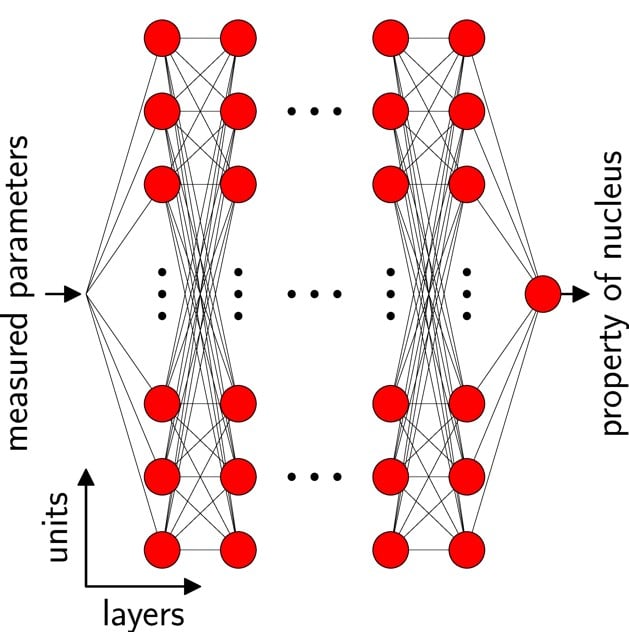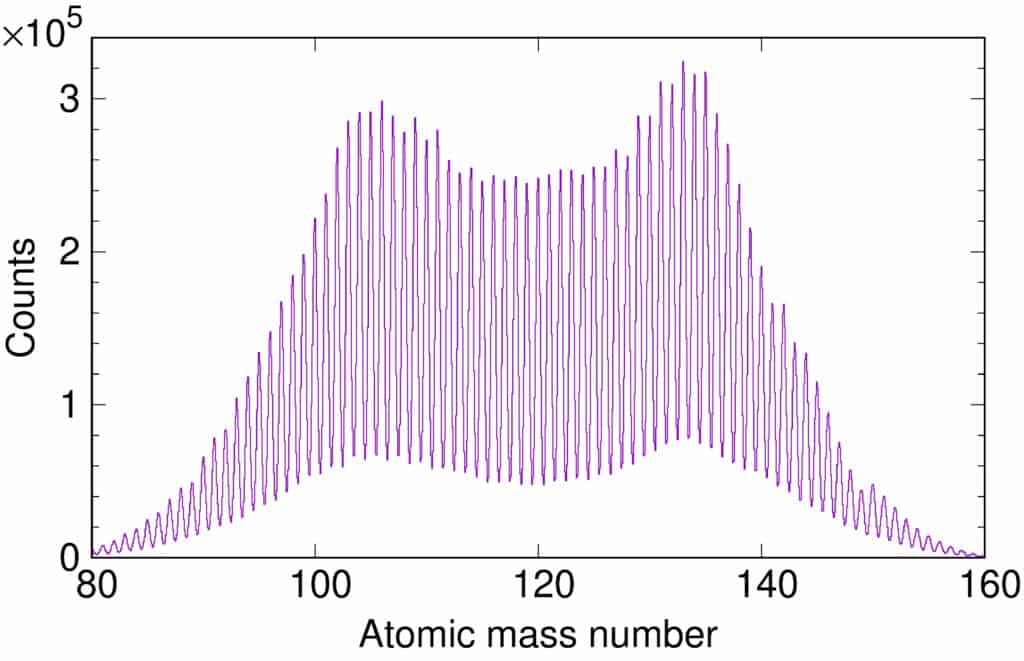- Homepage
- >
- Scientists
- >
- News & Highlights
- >
- 2025
- >
- Artificial Intelligence futher enhances the VAMOS Spectrometer at GANIL
Artificial Intelligence futher enhances the VAMOS Spectrometer at GANIL
At GANIL, an artificial intelligence model based on a neural network now facilitates and improves the identification of nuclei detected in the VAMOS spectrometer. Operational for all experiments, it provides real-time data analysis while ensuring remarkable accuracy. The uncertainty on the atomic mass thus remains below 0.5%, representing a significant gain in the reliability and speed of experiments conducted at GANIL.
A spectrometer at the heart of nuclear research
VAMOS is a magnetic spectrometer capable of collecting particles resulting from a wide variety of nuclear reactions. Thanks to its large acceptance in angle and momentum, it allows the analysis of very different ions, originating from complex experiments, by characterizing two of their fundamental properties: the mass number (A) and the atomic number (Z). The determination of mass relies on measuring the magnetic rigidity, a parameter linked to the trajectory of ions in the spectrometer’s magnetic field, as well as their energy and velocity. The identification of the atomic number is achieved through the measurement of energy loss combined with the total energy of the fragment.
However, analyzing the trajectories of ions in such a complex device is no easy task. To reconstruct the precise path of an ion from its production point to the focal plane of the spectrometer, one must measure its initial and final coordinates with great precision, then apply advanced trajectory reconstruction algorithms. Until now, these calculations were based on the simplifying assumption of a highly localized beam impact point on a thin target, which is no longer suitable for all experimental cases.
A New Challenge: Extended Gas Target
A new experimental program for VAMOS, focused on studying fission dynamics, introduces an additional difficulty: the use of an extended gas target. In this context, the beam interacts with the target over a larger volume, making the single interaction point assumption obsolete. To address this, researchers have developed a reconstruction method that incorporates the three-dimensional coordinates of the interaction point between the beam and the target-a particularly complex task due to the system’s non-linearity.

This is where artificial intelligence comes into play. Deep neural networks (DNNs) are particularly suited to this type of problem, as they can learn to recognize complex relationships in very large datasets. The researchers opted for a dense architecture with six layers, each containing 32 neurons, followed by an output unit. The network’s input data includes the three-dimensional position of the interaction in the target, the angles of the reaction products, and their coordinates at the focal plane. The network then learns to predict the magnetic rigidity and the exact path length. A schematic representation of such deep neural network is shown in Figure 2.

Successfully Trained on Simulated Data
To train this network, researchers used the ZGOUBI simulation code, specialized in calculating ion trajectories in magnetic fields. A set of 200 million theoretical trajectories was generated, covering the entire volume of the gas target. After several hours of training, the neural network became capable of processing events in real time with exceptional precision. Notably, the neural network maintains exceptional accuracy, ensuring an uncertainty on the atomic mass number below 0.5%.
The method was validated using data from experiment E826 conducted at GANIL. During this experiment, fission fragments were produced by reactions induced by a uranium-238 beam on a thin beryllium target. The VAMOS spectrometer detected these fission fragments. The data were then analyzed by the neural network, which successfully reconstructed the atomic mass distribution in the case of a thin target, as shown in Figure 3.

Towards a New Era of Data Analysis
The integration of artificial intelligence into nuclear physics instruments opens the way to many possibilities. In the long term, these technologies could enable automatic identification of fundamental characteristics of nuclei, such as their charge state or atomic number, without requiring manual analysis. They could also significantly speed up simulations and experiment preparation, making the research process faster and more efficient.
This project at GANIL perfectly illustrates how the most advanced digital tools can be integrated into cutting-edge experimental infrastructure to push the boundaries of knowledge. Thanks to artificial intelligence, researchers now have a powerful tool to explore matter at the nuclear scale, with a level of precision and speed previously unattainable.
Further Reading :
[1] Performance of the improved larger acceptance spectrometer : VAMOS++, M. Rejmund et al. Nucl. Inst. And Methods A 646, 184 (2011), doi : 10.1016/j.nima.2011.05.007
[2] Seven-dimensional trajectory reconstruction for VAMOS++, M. Rejmund and A. Lemasson, Nucl. Inst. And Methods A 1076, 170445 (2025), doi : 10.1016/j.nima.2025.170445
